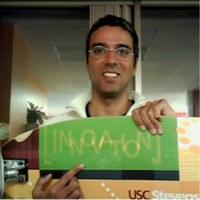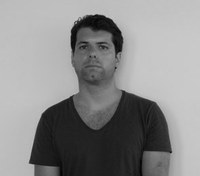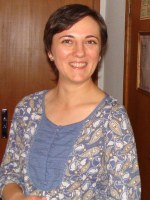Where are you now?
Every month INESC TEC sends highly qualified individuals into the market. These individuals often then go on to occupy important positions in some of the best national and international companies or they opt to form spin-offs. As the best way to perform technology transfer is through individuals, this section is dedicated to collaborators that trained at INESC TEC and now star in other companies and institutions.

André Fernandes, UPIN, Technology transfer officer
- Year when you began working at INESC TEC and when you left: 2005-2006
- Unit(s) at INESC TEC where you worked: Department of Information and Logistics (DIL)
- Name(s) of project(s) you were involved in:
INESC Porto is growing, via INESC TEC, and investing more and more in internationalisation, not only through projects and contracts, but also organically. The Institute is also promoting new areas of intervention, with new units. Here I would like to highlight UITT (Innovation and Technology Transfer Unit), whose role in managing innovation, technology transfer and in promoting entrepreneurship (internally and externally) responds to the need already felt in 2005 of finding new ways to value the knowledge and the members of the institution. I am also aware that the institution’s role has also become more explicit and specialised, which, according to my experience “selling” the U.Porto (University of Porto), will increase efficiency by promoting new partnerships and increasing gains.

António Almeida, Karlsruhe Institute of Technology (KIT), Researcher
- Year when you began working at INESC TEC and when you left: 2004
- Unit(s) at INESC TEC where you worked: Optoelectronics and Electronic Systems Unit (UOSE)
- Name(s) of project(s) you were involved in: IP over WDM – Wavelength Conversion in Optical Networks
Even though I have been working in areas which are different from those I developed at INESC Porto, several of my work characteristics are similar and I use them still today, always seeking to improve.
I would like to highlight the contact with science and scientific method, as well as the curiosity and the will to improve that I learned at INESC Porto.
Even though I don’t have a continuous contact with INESC Porto (except from reading BIP), it seems clear that there is an effort to improve its communication, establishing bridges with different parties interested in R&D (such as Universities, Industry, current and former employees, as well as foreign entities).
For that, BIP is an exemplary communication instrument and a confirmation of that effort.

Giorgiana Ciobanu
- Year when you began working at INESC TEC and when you left: 2005-2008
- Unit(s) at INESC TEC where you worked: Telecommunications and Multimedia Unit (UTM)
- Name(s) of project(s) you were involved in: ENTHRONE II
At INESC TEC, previously known as INESC Porto Associate Laboratory, I had the opportunity to learn and to get training from professionals such as Teresa Andrade and Pedro Carvalho. All the knowledge and experience that I gained during the time I was an Inescquian have given me a solid background that was essential for my current post. I am very grateful to these people and to all my former colleagues at UTM who helped me “grow” and are still my friends today. And of course one of them is my husband Lucian, who is still at INESC TEC.
I miss all these lovely people, many of whom I still talk to today, and the family environment at UTM.
From what I can tell, INESC TEC is now more dynamic and ever since I left, the Institute has been growing tremendously in several components, namely promoting stronger connections with the national industry and investing in internationalisation. With this, INESC TEC gained even more visibility and still today there are colleagues of mine at Porto Editora that still see me as a former Inescquian.


